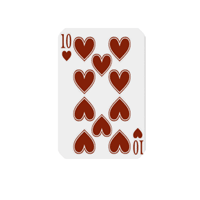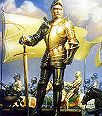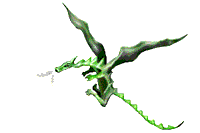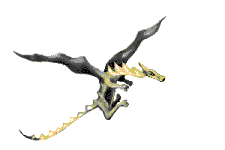The Truth About Tells
By Daniel Negreanu
I’m going to let you in on a little secret here. If you believe that watching for a twitchy eye or a flared nostril is what poker is all about — you’re quite wrong. Many poker players (mainly those who are new to the game) are preoccupied with the notion that bluffing and the ability to discover tells are what it’s all about.
I often hear someone say something like, “Oh, I could never be a good poker player. I have a terrible poker face.” Or, “I wouldn’t be very good at poker. I just can’t tell a lie, so I wouldn’t be able to bluff with a straight face.”
Well, if you believe that, this column should be a pleasant awakening. While it is important to avoid giving away too much information with your body language, it’s nowhere near as important as learning the fundamentals of the game. In fact, I would bet that a world-class player could beat a low-limit game even if he told his opponents what he had on the turn every single time! Of course, that would work only if his opponents didn’t always believe him, but I think you get the idea.
So, what is it, then? What is it that separates average and good players from the great ones? Well, obviously, tell recognition would be one factor, but it’s simply not the most significant. The answer is: hand-reading ability; the ability to process information that you’ve gathered from your opponent in the current hand and in past hands, and to use that information to narrow down your opponent’s holdings. Picking up on your opponents’ betting patterns and understanding what they are and aren’t capable of doing, makes this much easier. So, when you hear people talk about “reading people,” what it really comes down to is reading into your opponent’s mind what he is thinking at the moment, and trying to figure out how he would play various situations. It’s not about noticing that when Al has a flush draw, he eats an Oreo cookie without opening it up first, but when he has top pair, he licks out all the cream first. That would be one heck of a tell, but obvious tells like that are pretty much reserved for the movies. However, some pros would like you to believe that their biggest strength is their ability to “see through your soul”; that is, knowing what your holecards are just by looking at you. This might be true in cases in which players have exaggerated tells, but for the most part, a great player makes his read based on the actual betting that took place, not the facial tics.
Now, I shouldn’t be telling you this, but I will anyway. It’s simply a scare tactic used by many pros to make you feel uncomfortable. Think about it: When you make a bet (whether it’s a bluff or not) and your opponent throws his hand in immediately, or even calls immediately, is it intimidating? No, not really. Well, what if he takes extra time? He stares you down. He cuts his chips out to make it look like he wants to raise, and so on. Now, that might make you sweat a little bit, especially if you are indeed bluffing! If it doesn’t make you sweat, it at least might make you uncomfortable having a guy stare at you for so long. It’s all a ploy, as simple as that.
Most often, a player knows exactly what he’s going to do within five seconds. You’ll see it on the World Poker Tour telecasts quite often, thanks to the hidden cameras. There was a hand at the World Poker Open tournament in which Dave “Devilfish” Ulliot made a play with the 5diamonds 2diamonds. The player he had raised moved all in, and David went into the tank (meaning he took a substantial amount of time pondering whether or not to call the bet)! Why did he do this? After all, he is an experienced pro, and knew full well that he wasn’t going to call the all-in raise, so why waste all that time?
Well, there are a couple of possible answers to that question. He may have just wanted to save face in order to conceal the fact that he was raising with a trash hand, or, more likely, he was trying to make his opponent sweat a little bit. He wanted to make him nervous, and put him through three minutes of torment before finally releasing his hand. Many players in this situation would be so relieved that it’s finally over that they subconsciously might think to themselves, “Hmm, I better think twice about making any moves against that guy in the future.”
Well, that’s just what the Devilfish wanted from him. He wanted to scare him. He wanted him to think that if he ever tried to bluff him, he would have to deal with a full five-minute stare-down. That’s more than the average guy wants to deal with at the table, so many of them will begin playing in a straightforward manner from that point on — thus making it even easier on our pro to control the table.
Don’t be paranoid of or obsessed with tells. That’s not where your focus should lie. I remember a few years ago something that I thought was rather cute. There were a few aspiring pros in a $10-$20 game at the Mirage one night. They looked fresh and ready to play. For several hours I watched them. Their eyes were constantly fixated on the player who was next to act. They gave each and every player the stare-down — on every street, whether they were in the hand or not! I thought it was quite funny, actually. They were so obsessed with trying to figure out what people’s tells were that they completely neglected what was actually going on in the hands — who bet, who raised, and so on. Instead of watching the action of the game and studying betting patterns, they spent all of their time trying to figure out if Grandma Betty actually had a nervous twitch, and whether or not her twitch revealed something about her holecards! They clearly had a lot of passion and energy for the game, but they were wasting all of that energy exercising the wrong muscles.
article from pokerpages.com
Monday, January 1, 2007
Subscribe to:
Post Comments (Atom)




No comments:
Post a Comment